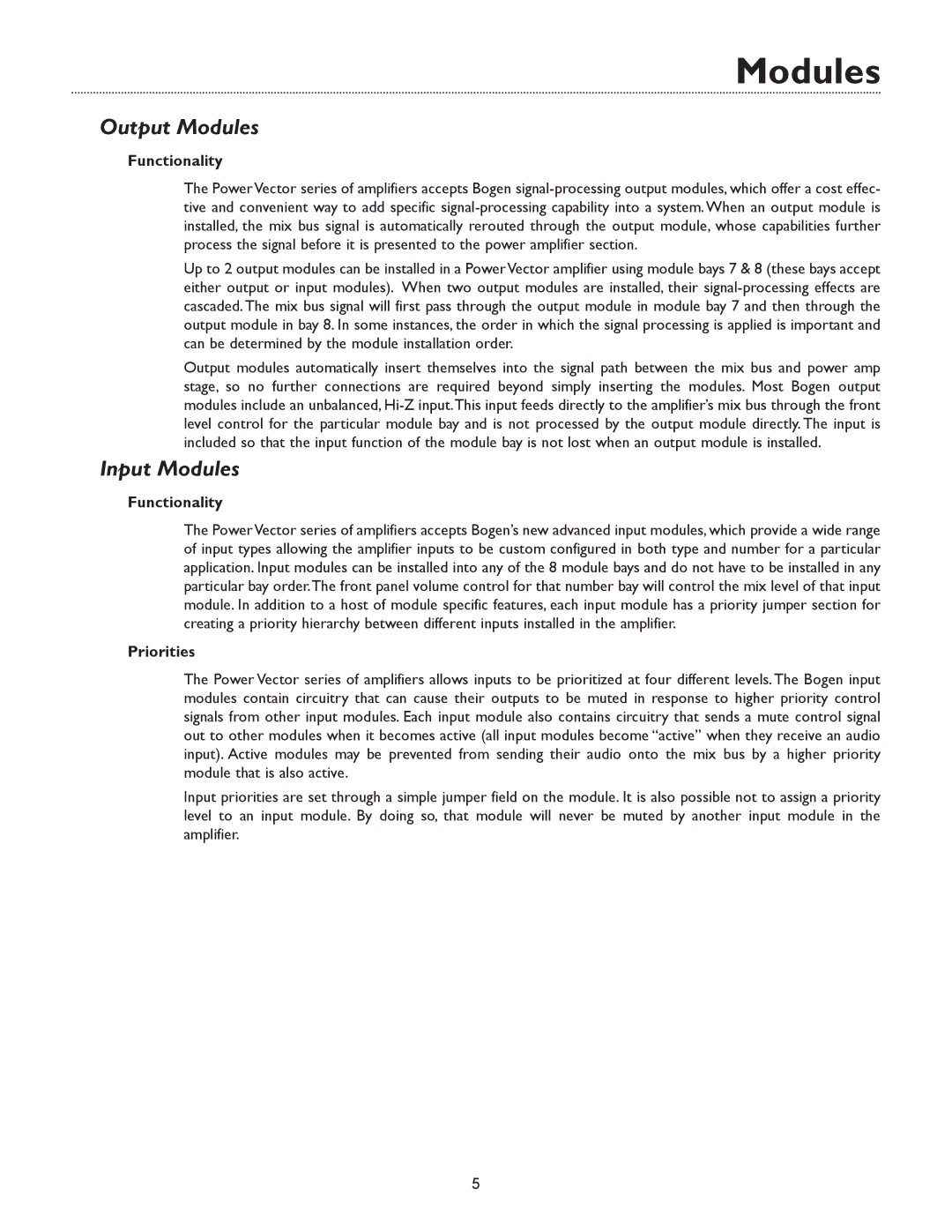V250, V100, V150, V60 specifications
Bogen has established itself as a trusted name in the field of telecommunication and public address systems, especially with their V series of amplifiers, including the V100, V60, V150, and V250 models. Each of these units showcases Bogen’s commitment to quality, durability, and innovation.The Bogen V100 is designed for smaller installations, ideally serving schools and small offices. It features a compact design with a power output of 100 watts, making it sufficient for environments that require clear sound without overwhelming amplification. The V100 incorporates features like a built-in mixer with multiple microphone inputs, allowing users to connect different audio sources simultaneously. Its user-friendly interface and straightforward controls make it accessible to those without extensive technical knowledge.
Next in the lineup is the Bogen V60. This amplifier offers enhanced versatility while maintaining a compact footprint, suitable for a variety of applications. With a power output of 60 watts, the V60 is perfect for classrooms, conference rooms, or smaller venues. It features an integrated RCA input, allowing for easy connection to external audio sources such as CD players or computers. The unit also supports a range of speaker configurations, making it adaptable for different audio setups.
The V150 model ramps up the power to deliver 150 watts, catering to mid-sized venues that require greater amplification. It boasts robust build quality and advanced circuitry designed for superior signal processing and clarity. The V150 supports both line-level and microphone-level inputs, providing flexibility for various audio requirements. Additionally, features like built-in EQ controls allow for sound customization to suit specific environments, enhancing audio output.
For larger installations, the Bogen V250 is the powerhouse of the series, delivering 250 watts of output. It is engineered for environments that demand high-performance public address systems, such as auditoriums and large conference areas. The V250 is equipped with advanced thermal protection and overload circuitry to ensure reliability during prolonged use. This model can support multiple zones, enabling complex audio needs across expansive spaces. Furthermore, its compatibility with various accessories makes it a versatile choice for integrators.
All four models in the Bogen V series reflect a blend of superior technology, thoughtful design, and practical features, making them stand out in their category. Bogen amplifiers are known for their reliability and efficiency, ensuring that whether for a small classroom or a large auditorium, users can always count on crystal clear audio performance. With options to suit different power requirements and configurations, Bogen continues to be an industry leader in public address and sound system solutions.
